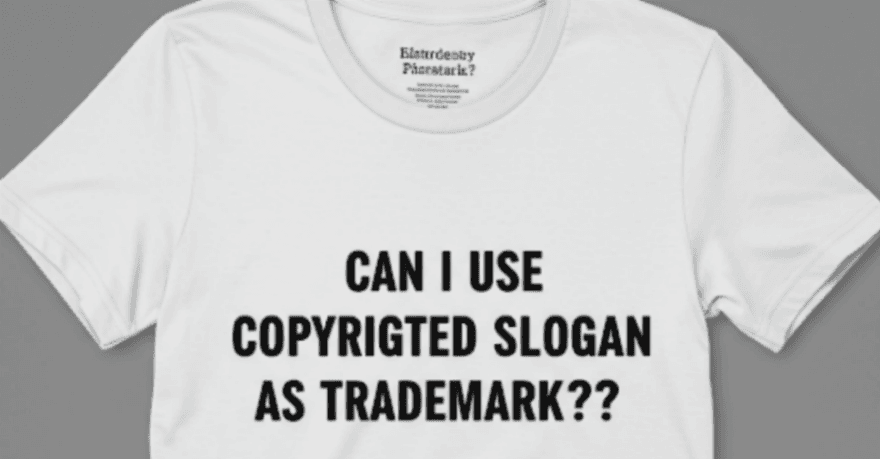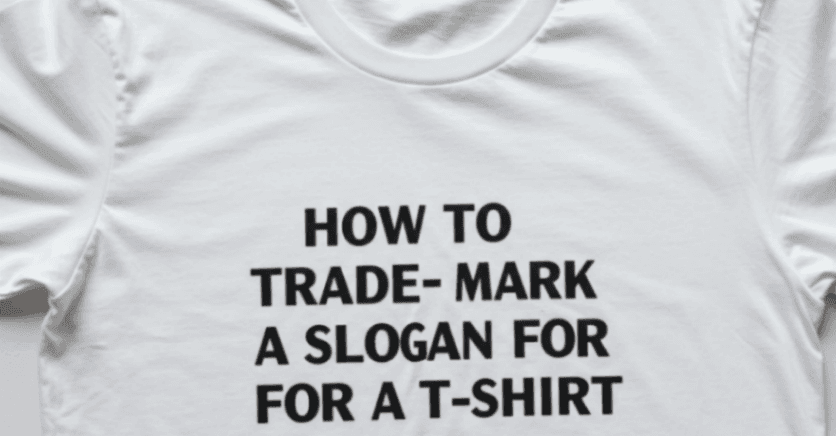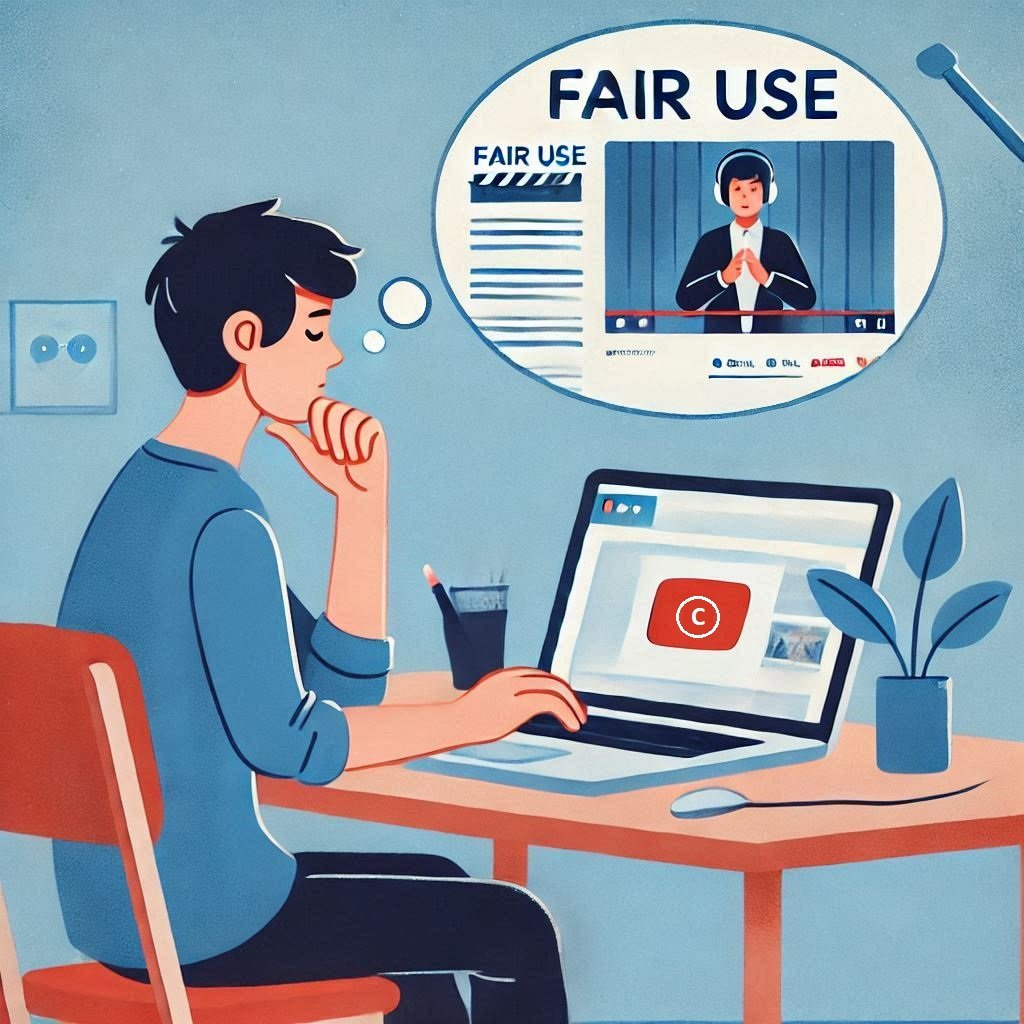Do you have a catchy slogan that would look great on a T-shirt? If you’re planning to sell T-shirts featuring your slogan, you might be wondering: Can I trademark a slogan for a T-shirt? The answer is yes—but only under certain conditions.
Trademarking your slogan ensures that no one else can legally use it in a similar business. In this article, we’ll explore how to trademark a slogan for a T-shirt, covering essential trademark laws, real case studies, and common mistakes to avoid.
What is Trademark Protection for Slogans?
A trademarked slogan for a T-shirt is a unique phrase or tagline that identifies and distinguishes your T-shirt brand. Trademarking this slogan grants you exclusive rights to its use, preventing others from using a similar phrase that could cause confusion among consumers.
Key Considerations for Trademarking a T-Shirt Slogan:
- Distinctiveness: The slogan must be unique and not merely descriptive of the T-shirt’s features. Generic or common phrases are typically not eligible for trademark protection.
- Use in Commerce: To qualify for trademark protection, the slogan should be used in commerce, such as being printed on T-shirts sold to consumers. This demonstrates that the slogan functions as a source identifier.
- Avoiding Confusion: The slogan should not be confusingly similar to existing trademarks, especially those in related industries, to prevent legal disputes.
Example Case Law: In re Hulting (2018)
In this case, a business applied to trademark the phrase “You Are Enough” for clothing. The USPTO rejected it, stating that the phrase was purely decorative and did not function as a trademark. This highlights the importance of using the slogan in a way that consumers associate with your brand.
What Kind of Slogan Can Be Trademarked?

For a slogan to be eligible for trademark protection, it must:
- Be Unique and Distinctive: The slogan should be original and not a commonly used phrase.
- Serve as a Source Identifier: It must clearly indicate the source of the product or service.
- Be Used in a Commercial Context: The slogan should be used in commerce, such as on product packaging or marketing materials.
- Not Be Misleading or Offensive: The slogan should not deceive consumers or be offensive, as these are usually rejected by trademark offices.
Examples of Trademarked Slogans:
- “Just Do It” by Nike: This slogan is unique, serves as a source identifier for Nike’s products, and is used in various marketing materials.
- “I’m Lovin’ It” by McDonald’s: This distinctive phrase identifies McDonald’s and is used in their advertising campaigns.
- “Have a Break, Have a Kit Kat” by Nestlé: This slogan is unique, serves as a source identifier for Kit Kat, and is used in their marketing materials.
What Slogans Are Not Eligible for Trademark Protection on T-Shirts?
Certain types of slogans cannot be trademarked, including:
- Generic phrases (e.g., “Best T-shirt Ever”)
- Common expressions or motivational quotes (e.g., “Keep Smiling”)
- Merely decorative slogans that do not identify the brand
- Slogans that cause confusion with an already registered trademark
Example: In re Bose Corporation
Bose Corporation attempted to trademark the phrase “Better Sound Through Research.” Initially, the United States Patent and Trademark Office (USPTO) rejected the application, considering the phrase too descriptive. However, Bose appealed, and the Trademark Trial and Appeal Board (TTAB) reversed the decision.
The TTAB concluded that, despite its descriptive nature, Bose had demonstrated that the phrase had acquired distinctiveness as a trademark due to extensive use and promotion. This means that the phrase had become uniquely associated with Bose, allowing them to register it as a trademark.
How to Check If the Slogan to Be Used on a T-Shirt Is Already Trademarked by Someone Else?
To determine if your T-shirt slogan is already trademarked, follow these steps:
Conduct an Online Search:
Start by searching the internet to see if your slogan is being used in a similar industry or field.
Use the USPTO’s Trademark Electronic Search System (TESS):
For a more formal search, visit the United States Patent and Trademark Office (USPTO) website and use their TESS database to look up the phrase or logo you’re interested in.
This database will show if your desired phrase or logo is already registered or if there are similar trademarks that might cause confusion.
Consult a Trademark Attorney:
If you find a potential conflict or need further clarification, consult a trademark attorney for professional advice. They can provide a detailed analysis and help with registration if needed.
Can I Use a Copyrighted Slogan as a Trademark Slogan on a T-Shirt?

In general, short phrases and slogans are not protected by copyright law. This is because copyright law protects original works of authorship that have a certain level of creativity and length.
Here are some examples of the types of slogans that are not protected by copyright:
- Common Phrases: Phrases that are commonly used in everyday language, such as “Got Milk? or “High Performance” or “Affordable Prices” etc.
- Short Phrases: Very brief phrases, even if they are unique, typically do not qualify for copyright protection. Examples include “Think Different” or “Eat Fresh.”
- Titles: Titles of books, movies, and other works generally do not receive copyright protection.
- Catchphrases: Catchphrases that are often used in advertising and marketing are not protected by copyright.
However, these kinds of slogans and phrases can often be protected under trademark law if they are used to identify the source of goods or services.
Gorski v. Gymboree Corporation Case (2014)
In this case, the plaintiff, Gorski, filed a lawsuit against Gymboree for copyright infringement, alleging that Gymboree had copied elements of a T-shirt design he had created.
The court dismissed Gorski’s copyright claim, stating that short phrases, no matter how distinctively arranged, are not protectable elements under copyright law. This case highlights the limitations of copyright protection for short phrases and slogans.
Step-by-Step Guide on How to Trademark a Slogan for a T-Shirt

1. Conduct a Trademark Search
- Begin by conducting a thorough trademark search to ensure that your slogan is unique and not already in use.
- Utilize resources like the United States Patent and Trademark Office (USPTO) database or relevant trademark offices in your country.
2. Determine the Trademark Class
Trademarks are categorized into different classes. For T-shirts, you’ll typically file under Class 25 (Clothing, Footwear, and Headgear).
3. Ensure Your Slogan Is Not Merely Decorative
- Avoid using the slogan in a purely decorative way. To strengthen your trademark application, consider:
- Placing the slogan inside the shirt tag or near the brand name.
- Using it on packaging or promotional materials.
- Displaying it in advertising campaigns.
4. File a Trademark Application
- Once you’ve verified availability and ensured proper usage, you can apply for a trademark through the USPTO (for U.S. applicants) or the relevant trademark office in your country.
- Filing Process:
- Go to the USPTO website and submit your application.
- Choose between a TEAS Plus or TEAS Standard application.
- Pay the applicable fees (typically between $250–$350 per class).
- Provide a specimen showing how your slogan is used on T-shirts.
5. Respond to Office Actions (If Needed)
- If the USPTO finds issues with your application, they may issue an Office Action, asking for clarification or changes.
- You’ll need to respond within six months.
6. Wait for the Registration Certificate
Once approved, your slogan will be officially registered, and you can enforce your rights against infringers.
Common Trademark Pitfalls to Avoid
Trying to Trademark Common Phrases:
Generic or widely used phrases typically cannot be trademarked because they lack distinctiveness. For example, phrases like “Best Quality” or “Simply the Best” are too common to identify a specific brand.
Not Using the Slogan as a Trademark:
For a slogan to be eligible for a trademark, it must be used in a manner that identifies and distinguishes the source of the goods or services. This means the slogan should be tied to branding and marketing efforts.
Register Your Slogan:
Apply for trademark protection to get legal rights. Registering your slogan with the USPTO or the appropriate trademark office in your country provides legal protection and helps prevent others from using it without permission.
Use Trademark Symbols:
Use ™ for unregistered and ® for registered slogans. This alerts others that your slogan is legally protected and prevents misuse.
Monitor for Infringements:
Regularly check if others are using your slogan without permission. Set up Google Alerts or use trademark watch services to stay informed and protect your intellectual property.
Take Action:
If someone infringes on your trademark, send a cease-and-desist letter. Prompt legal action is crucial to enforce your rights and stop unauthorized use.
Renew Your Trademark:
Remember to renew your trademark periodically (every 10 years in the U.S.). Failing to renew your trademark can result in loss of protection.
Conclusion
Trademarking a slogan for a T-shirt is a great way to protect your brand, but it requires strategic planning. Ensure your slogan is distinctive, used in branding (not just decoration), and properly registered. By following the correct legal steps, you can secure exclusive rights and build a strong clothing brand.
Ready to trademark your T-shirt slogan? Consult a trademark attorney to avoid costly mistakes and streamline the process.




